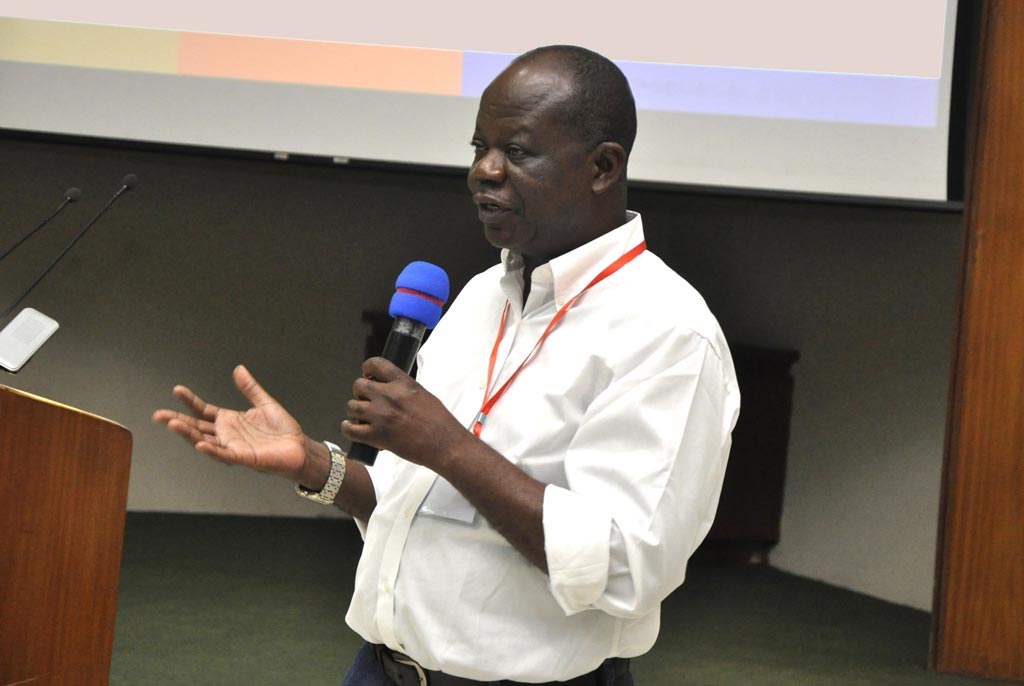By Akanimo Sampson
Nigeria is likely to record 10,000 positive cases of COVID-19 by the end of this May. The number of infected persons in the country is already racing towards the 10,000 marks.
Apparently worried, a top executive of the International Institute of Tropical Agriculture (IITA) has outlined what the world needs at this time of the disturbing COVID-19 crisis.
Director of IITA East Africa hub, Victor Manyong, is claiming that circular bio-economy is what the world now needs as it advances in technology, finance, and population.
However, Nigeria’s total number of COVID-19 infections has zoomed to 6401 as at Tuesday, with 226 new cases recorded across the country.
The Nigeria Centre for Disease Control (NCDC) says with one patient dying of coronavirus-related complications in the last 24 hours, the total number of fatalities in the country currently stands at 192 deaths.
About 36,899 samples, according to NCDC, have been tested nationwide with 4475 of the total 6401 confirmed cases remaining active.
The agency also confirmed that 1,734 cases have been successfully treated and discharged in 34 states and the Federal Capital Territory (FCT), Abuja.
Of the 226 new cases the agency reported from 16 states, Lagos still leads the pack with 131 cases, Ogun 25, Plateau 15, Edo 11, Kaduna seven, Oyo six, Abuja and Adamawa five each, Jigawa, Ebonyi and Borno four each, Nasarawa three, Bauchi and Gombe two each, Enugu and Bayelsa one case each.
On the need for people to self-isolate after being exposed to the virus, the NCDC said it is critical to stay in isolation if positive to reduce the risk of spreading the virus to others as well as loved ones.
The Centre says most people infected with the virus only have mild to moderate symptoms and recover, while some others have severe symptoms and may die, especially older people and those with underlying sicknesses.
At the moment, as the rampaging COVID-19, continues to spread around the world, it is reaching countries most vulnerable to the health and economic impact of the virus.
In the troubled North-East axis of Nigeria, people fleeing conflict, living in poverty or without access to healthcare like in the creeks of the Niger Delta, Nigeria’s vastly polluted oil and gas region, face greater risk from this pandemic.
Food is not getting to those who need it. And, it has been said that 130 million more people will go hungry this year. Over 368 million children are said to be missing meals and snacks because schools have been shut down.
Restrictions on movement are already devastating the incomes of displaced people in Uganda and Ethiopia, the delivery of seeds and farming tools in South Sudan, and the distribution of food aid in the Central African Republic.
Altogether, an estimated 265 million people are being pushed to the brink of starvation by the end of this 2020.
Disturbingly, countries that depend on imported food are especially vulnerable to slowing trade volumes, especially if their currencies decline. While retail food prices in parts of Nigeria, Abuja inclusive are rising everywhere, experts say the impact is more severe when the change is sudden, extreme and volatile, particularly in places where food costs account for a larger share of household budgets.
Arguably, the most devastating effects in Africa are felt by those already most vulnerable – people and communities in fragile or conflict-affected places, especially internally displaced people and refugees, with weak health systems, struggling economies, and poor governance.
Meanwhile, in this video, Manyong, who is also CGIAR-IITA’s Head of Social Sciences and Agribusiness, describes circular bio-economy as a model which “makes use of resources as much as possible, for as long as they can be used in the production system.”
For the urbanite, think of it this way: If you buy sweet potato and banana, you can still get more from them other than consumption.
You can use the peel as manure or mulch for your small vegetable garden that will yield more, thus saving you some of the money you would have spent on chemical fertilizer or buying vegetables.
For the farmers in rural areas, the benefits are even more immense. According to Manyong, what farmers formerly considered waste or the end of a cycle can now be the beginning of a new production cycle. In this video, he cites the example of cassava.
“Previously, the farmer would benefit from only the root/pulp, and the peel would be wasted. In the circular bio-economy, the farmer has two products—the pulp and peel. The peel is processed into animal feed.”
The circular bio-economy not only extends the shelf life of resources but also ensures a clean living environment, free from waste.
At the beginning of the pandemic, people rushed to buy and stock up on essential commodities such as food and toiletries.
Stocking up on essentials is one battle won; the next frontier of survival is being frugal and getting the most out of your purchases.
“Most of us will immediately think of reduced consumption as the only way of getting the most of what we have, but there is more. Frugality relates to the linear production model while increased usability or turning waste into wealth is the central concept behind the circular bio-economy’’, the IITA chief says.
Watch this video and learn more about this model.

